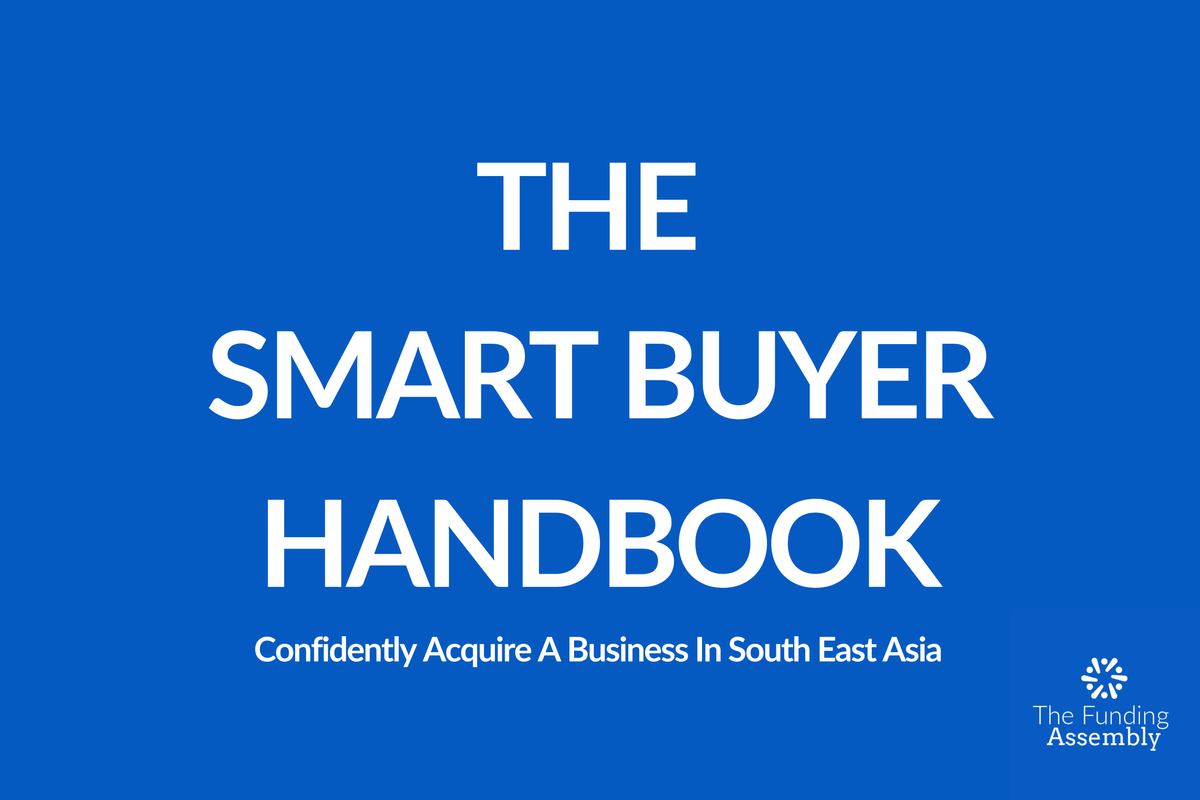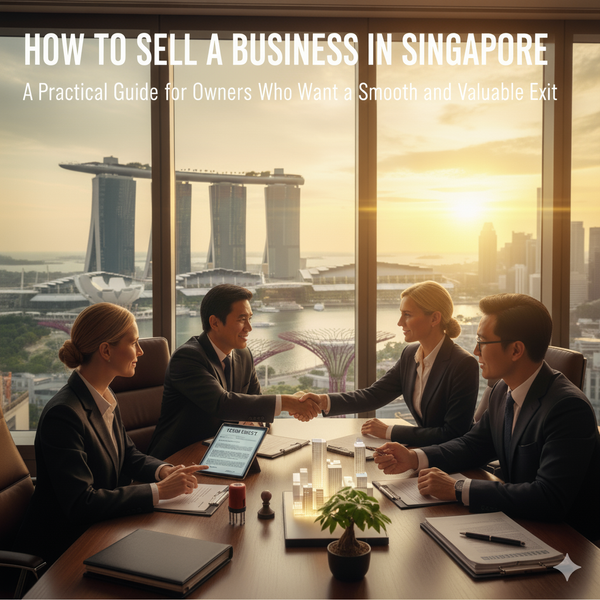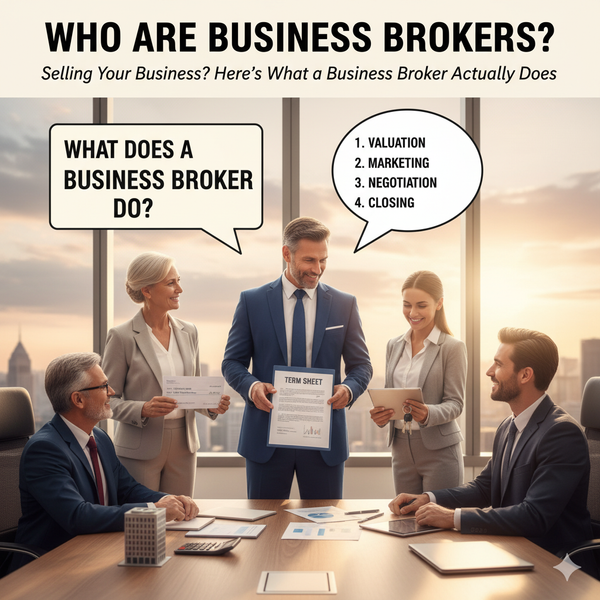A step-by-step guide to navigating SME acquisitions with clarity, confidence, and strategic guidance.
Content Page
Page | Section Title | Theme |
|---|---|---|
1 | Introduction | M&A for SMEs – Why It’s the Smartest Growth Strategy |
2 | The Buyer Mindset | What Makes a Successful Business Buyer |
3 | Deal Sourcing | Where and How to Find Quality Businesses |
4 | Evaluating Targets | How to Assess a Business Beyond the Financials |
5 | Valuation & Deal Structures | What is It Worth and How Do I Structure the Deal? |
6 | Financing Your Acquisition | Debt, Equity & Creative Funding Explained |
7 | Letter of Intent (LOI) | How to Draft a Winning and Binding Offer |
8 | Due Diligence | What to Look for, What to Ask, What to Uncover |
9 | Legal Documents & Closing | Agreements, Pitfalls & Getting to Close |
10 | Post-Acquisition | How to Integrate, Manage, and Grow What You Buy |
M&A for SMEs – Why It’s the Smartest Growth Strategy
Acquiring an established business through M&A is often the fastest path to building wealth and scaling operations, offering entrepreneurs a proven and low-risk route compared to starting a new venture from scratch.
With business acquisition you inherit existing cash flow, operational systems, and customer relationships—circumventing the steep learning curve and high failure rates commonly associated with startups. In fact, acquisition buyers tend to enjoy significantly higher success rates than first-time founders, benefiting from an already-tested business model.
Now is a particularly advantageous time: as retiring business owners seek smooth exits, a wave of quality opportunities is hitting the market—available only once in a generation. That’s where The Funding Assembly steps in, connecting motivated buyers with a pipeline of credible, pre-qualified businesses that match their goals. By streamlining deal sourcing, due diligence, and financing, The Funding Assembly empowers aspiring entrepreneurs to confidently accelerate their growth through M&A—and start building operational scale and wealth from day one.
The Buyer’s Mindset
Adopting the right buyer’s mindset is absolutely crucial when stepping into the world of M&A and business acquisition.
Whether you’re a first-time operator, a seasoned corporate acquirer, or a strategic consolidator, the most successful acquisition entrepreneurs share a few key traits—resilience under pressure, adaptability in uncertainty, and a growth mindset after closing. They understand that buying a business isn’t just a transaction—it’s an emotional journey, filled with highs and lows from due diligence to final signatures.
That’s why managing risk and emotional cycles is as important as crunching the numbers. In fact, in the high-stakes world of M&A, mindset matters more than money; confidence, balance, and clarity can make the difference between a deal done—or a deal derailed. At The Funding Assembly, we work with buyers who bring tenacity, curiosity, and strategic focus—because, in business buying, the heart and mind must lead financial muscle.
How to Find the Right Business
Discovering the ideal business to buy depends on mastering deal sourcing strategies—whether that’s exploring brokered listings, tapping into off-market opportunities, or leveraging digital platform deals.
Brokered deals offer structure and vetted options, while off-market transactions provide exclusivity and less competition. Online platforms like BizBuySell extend reach across Southeast Asia, but they’re only one piece of the puzzle.
At The Funding Assembly, we combine listing site intelligence, exclusive advisor networks, and buyer matching to deliver a curated pipeline of quality matches. Our screening process focuses on consistent cash flow, transferable operations, and strong operational foundations. We also flag red alerts early—such as overreliance on the owner, missing documentation, and lack of succession planning—to ensure only sensible, scalable acquisition opportunities come across your desk. This holistic sourcing approach saves you time while safeguarding your deal trajectory.
Evaluating a Business Opportunity
Crunching the numbers is only the starting point—true value lies in the story behind the P&L statement.
Dig into customer base metrics like concentration ratios and churn rates, as high dependence on a single client or volatile churn can cripple growth. Equally important are key staff and cultural continuity; businesses thrive when institutional knowledge stays in place.
Next, assess the competitive moat—is the company defensible in a shifting market, and does it hold a strong brand or strategic positioning? Don’t overlook operational risks and seasonality, which can drastically impact cash flow and staffing cycles. At TFA, we prioritize both quantitative and qualitative assessments to paint a full picture—so you can make confident, data-backed buy decisions that align with your strategic goals.
Valuation and Deal Structures
Understanding how much to pay—and how to pay it—is essential for acquisition success. We evaluate target SMEs using proven valuation methods, like Seller’s Discretionary Earnings (SDE), EBITDA multiples, and asset-based valuations tailored to Southeast Asia’s market.
The value often hinges on the seller’s ongoing involvement; a well-supported transition can raise the deal premium. Deal structures vary: from 100% outright buyouts, through earn-out provisions, to creative deals featuring seller financing. Each comes with trade-offs around risk, control, and alignment post-close.
At The Funding Assembly, we analyze regional benchmarks to structure offers that are fair, financeable, and aligned with your growth strategy.
Financing Your Acquisition
Financing a business acquisition doesn’t have to mean draining your own capital. Most buyers blend funding sources: traditional bank loans, private equity, or angel investors can form a solid foundation—then layer in seller financing or vendor-assisted deals to bridge gaps.
In Singapore, for example, Enterprise Singapore and other agencies offer SME loan schemes to buyers. Our network of bankers, funds, and government schemes means you’ll have the best funding options curated to fit your specific needs.
Letters of Intent (LOI)
The Letter of Intent (LOI) is your first formal step toward securing a business—but done incorrectly, it can backfire. A solid LOI includes core deal terms—purchase price, structure, exclusivity period, and deposit conditions—while balancing binding vs. non-binding clauses. Post-LOI, there’s always room to negotiate, so you want flexibility built in. At The Funding Assembly, we use proven LOI templates aligned with cross-border standards, and our in-house legal checklist ensures you include essential protections. This approach helps you lock in serious deals without overcommitting—or getting locked out from better opportunities.
Due Diligence
Due diligence is where risk discovery turns into clarity and oppportunity: evaluating financial, legal, tax, HR, customer contracts, and intellectual property is vital to avoiding unpleasant post-close surprises.
A detailed diligence checklist avoids gaps, and using a secure virtual data room streamlines document sharing. We encourage engaging third-party experts — accountants, lawyers, operational advisors—to dig deeper across each facet.
At TFA, we deliver workflows that track diligence progress, flag risks in real time, and ensure a smooth path from review to report—informing whether to proceed, renegotiate, or walk away.
Final Agreements & Closing
Closing the deal requires more than signatures—it requires clarity and protection. The Sale & Purchase Agreement (SPA) forms the legal foundation, detailing representations and warranties, indemnities, and post-close covenants.
Typical mechanisms like escrow accounts, holdbacks, and payment tranches help manage transition risk and performance fulfilment.
At The Funding Assembly, we coordinate with your legal counsel to manage document flow, advocate for buyer protection clauses, and ensure your rights are prioritised through timelines, indemnity caps, and post-close obligations.
Our mission: Get you to the finish line cleanly and with confidence.
Life After the Acquisition
The acquisition is just the beginning.
Effective post-merger integration drives growth, preserves value, and ensures buy-in across the organization. Start by managing staff, offering transparency to sustain morale. Then align systems integration, reporting structures, and operations under clear KPIs. Refresh the brand and customer communication strategy to reflect new ownership and opportunity.
Lastly, leverage TFA’s consulting network for operational advisors, IT integration experts, HR specialists, and marketing teams to help optimize your business from day one. With proactive planning, you’ll outpace competitors and unlock the full value of your acquisition—in the short and long run.


